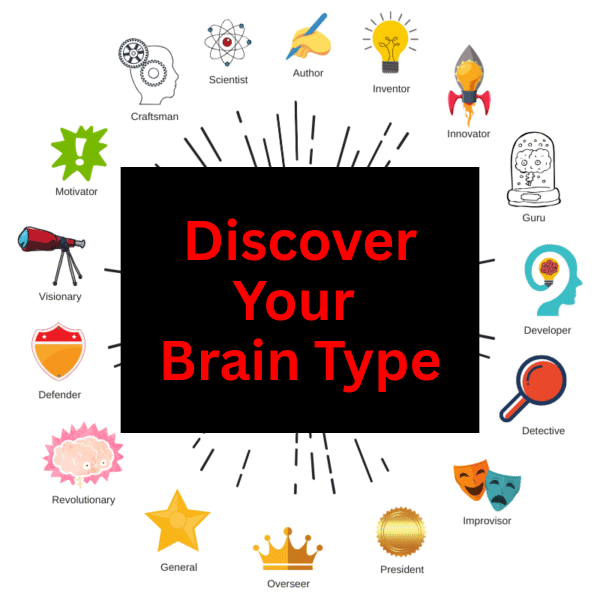Hunger is more than a growling stomach—it’s a complex system of signals driven by biological, physiological, and psychological factors. Recognizing the different types of hunger can empower you to make informed eating choices, manage weight, reduce unnecessary snacking, and improve overall health. While hunger is often categorized as physical (energy-driven) or psychological (emotion- or habit-driven), it encompasses multiple dimensions. This post explores seven distinct types of hunger, grounded in scientific insights, to help you tune into your body’s cues and foster mindful eating habits.
1. Cellular Hunger
Cellular hunger arises when your cells lack essential nutrients, prompting a signal for replenishment. Consuming nutrient-dense foods satisfies this hunger as cells absorb vital vitamins, minerals, or macronutrients. Symptoms may include irritability, fatigue, or headaches, reflecting a need for specific nutrients rather than just calories. For example, deficiencies in iron or B vitamins can trigger persistent hunger despite recent meals. To address this, prioritize whole foods like leafy greens, nuts, and organic proteins, which supply necessary micronutrients. Studies show that nutrient imbalances can drive overeating as the body seeks to correct deficiencies.1
2. Hormonal Hunger
Regulated by hormones like ghrelin (which stimulates appetite) and leptin (which signals fullness), hormonal hunger maintains energy balance. Ghrelin levels rise before meals and drop after eating, while leptin, produced by fat cells, curbs long-term hunger. Chronic overeating, poor sleep, or stress can disrupt this balance, leading to persistent hunger even after sufficient calorie intake. Leptin resistance, common in obesity, impairs fullness signals, exacerbating appetite. Managing this involves consistent meal timing, 7–8 hours of sleep, and stress reduction techniques like meditation to restore hormonal harmony.2,3
3. Blood Sugar Hunger
Blood sugar hunger occurs when glucose levels drop too low, triggering intense cravings for carbohydrates, often accompanied by shakiness, irritability (“hangry” feelings), or an urgent need to eat. Known as hypoglycemia, it can result from skipping meals, excessive exercise, or consuming high-sugar foods that cause rapid glucose spikes and crashes. In non-diabetics, mild hypoglycemia may cause jitteriness or nausea, while severe cases lead to sweating or confusion. Balanced meals with protein, fiber, and healthy fats help stabilize blood sugar and prevent these episodes.4,5
4. Mass Hunger
Mass hunger relates to the physical weight and volume of food in the stomach. Digestive tract receptors detect this bulk, signaling fullness that can manifest as sluggishness or heaviness when overfilled. This mechanical satiety, distinct from caloric content, explains why high-fiber foods like vegetables and lean meats promote longer-lasting fullness with fewer calories. Incorporating these foods into meals enhances this sensation, aiding portion control and reducing the urge to overeat.6
5. Stomach Fullness Hunger
Stomach fullness hunger focuses on extreme stomach distension, where stretch receptors signal maximum capacity to the brain, akin to a full gas tank, and cilia at the top of your stomach sense the volume. This prompts you to stop eating, preventing short-term over-consumption. The vagus nerve relays these fullness cues, but repeatedly ignoring them can desensitize the response. Eating slowly allows these signals, which take about 20 minutes to register, to guide intake effectively. Mindful eating practices reinforce sensitivity to these cues.6,7
6. Thirst Hunger
Thirst hunger is often mistaken for true hunger, as dehydration prompts the body to crave food as an alternative water source, since many foods contain moisture. Chronic dehydration, prevalent due to high caffeine intake or low water consumption, causes the body to misinterpret thirst as hunger, signaling you to eat more food so it can extract the water out of it. Proper hydration retrains these signals, reducing unnecessary eating. Symptoms like fatigue or headaches may mimic nutrient deficiencies but resolve with water intake. Drinking water and waiting 20 minutes before eating can clarify whether the sensation was thirst.8,9
7. Emotional Hunger
Emotional hunger drives eating to cope with moods or states, acting as a powerful form of self-medication. Unlike physical hunger, which builds gradually, it strikes suddenly, often craving comfort foods in response to stress, boredom, sadness, or even joy. Stress hormones like cortisol amplify cravings for high-fat, sugary foods, and eating often leads to guilt rather than satisfaction. Identifying triggers through journaling and substituting eating with activities like walking or socializing can break this cycle. Emotional eating’s accessibility makes it highly habit-forming.10,11
Final Tip: The Hunger Game Technique
To manage eating habits and to test if the hunger you feel is real, use the Hunger Game Technique: Rate your hunger from 0 (not hungry) to 10 (starving). Only eat when you reach 7 or higher to confirm genuine need, avoiding snacking from boredom or emotion. Stop at 4, as fullness signals take 20 minutes to fully register, leaving you satisfied at a 2 or 3 soon after. This intuitive eating strategy, supported by research, builds awareness of hunger cues and promotes sustainable health.12,13
By understanding these seven types of hunger, you can respond to your body’s signals with precision—whether by nourishing cells, hydrating, or addressing emotions. Listening to these cues transforms your relationship with food and supports long-term well-being. And to learn why hunger can actually be healthy, click here to learn more.
References
-
Blundell, J. E., et al. (2010). Appetite control: Methodological aspects of the evaluation of foods. Obesity Reviews, 11(3), 251–270. https://doi.org/10.1111/j.1467-789X.2010.00714.x
-
Klok, M. D., et al. (2007). The role of leptin and ghrelin in the regulation of food intake and body weight in humans: A review. Obesity Reviews, 8(1), 21–34. https://doi.org/10.1111/j.1467-789X.2006.00270.x
-
Spiegel, K., et al. (2004). Brief communication: Sleep curtailment in healthy young men is associated with decreased leptin levels, elevated ghrelin levels, and increased hunger and appetite. Annals of Internal Medicine, 141(11), 846–850. https://doi.org/10.7326/0003-4819-141-11-200412070-00008
-
Cryer, P. E. (2007). Hypoglycemia, functional brain failure, and brain death. Journal of Clinical Investigation, 117(4), 868–870. https://doi.org/10.1172/JCI31669
-
Seaquist, E. R., et al. (2013). Hypoglycemia and diabetes: A report of a workgroup of the American Diabetes Association and The Endocrine Society. Diabetes Care, 36(5), 1384–1395. https://doi.org/10.2337/dc12-2480
-
Cummings, D. E., & Overduin, J. (2007). Gastrointestinal regulation of food intake. Journal of Clinical Investigation, 117(1), 13–23. https://doi.org/10.1172/JCI30227
-
Phillips, R. J., & Powley, T. L. (1996). Gastric volume rather than nutrient content inhibits food intake. American Journal of Physiology-Regulatory, Integrative and Comparative Physiology, 271(3), R766–R769. https://doi.org/10.1152/ajpregu.1996.271.3.R766
-
Popkin, B. M., et al. (2010). Water, hydration, and health. Nutrition Reviews, 68(8), 439–458. https://doi.org/10.1111/j.1753-4887.2010.00304.x
-
Vij, V. A., & Joshi, A. S. (2014). Effect of excessive water intake on body weight, body mass index, body fat, and appetite of overweight female participants. Journal of Natural Science, Biology, and Medicine, 5(2), 340–344. https://doi.org/10.4103/0976-9668.136180
-
Macht, M. (2008). How emotions affect eating: A five-way model. Appetite, 50(1), 1–11. https://doi.org/10.1016/j.appet.2007.07.002
-
van Strien, T., et al. (2012). Emotional eating and food intake after sadness and joy. Appetite, 59(3), 864–870. https://doi.org/10.1016/j.appet.2012.08.022
-
Tylka, T. L., & Wilcox, J. A. (2006). Are intuitive eating and eating disorder symptomatology opposite poles of the same construct? Journal of Counseling Psychology, 53(4), 474–485. https://doi.org/10.1037/0022-0167.53.4.474
-
Tribole, E., & Resch, E. (2012). Intuitive Eating: A Revolutionary Program That Works. St. Martin’s Griffin.









